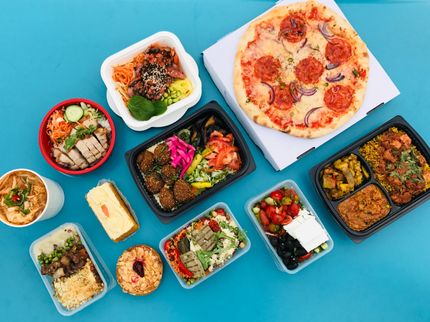Study innovates in gluten-free formulations, creating more palatable and nutritious bread
Study at the Federal University of São Paulo developed a recipe combining chickpea flour and psyllium, a plant-derived soluble fiber. The product is nourishing and rated highly by consumers in qualitative surveys.

Study developed a recipe combining chickpea flour and psyllium, a plant-derived soluble fiber.
Vanessa Dias Capriles/UNIFESP
Gluten is a protein complex found in cereals such as wheat, rye and barley. It is responsible for the elastic texture of dough so that loaves and rolls can be baked into different shapes while remaining flexible and crusty. It also lengthens the shelf life of bread at room temperature, when associated with preservatives.
Gluten intolerance, however, has become a global epidemic, and gluten-free products are increasingly popular. The problem is that most of those available on the market are far from corresponding to consumers’ expectations in terms of appearance, aroma, flavor and durability. A research line focusing on ways to enhance gluten-free products is being pursued in Brazil by nutritionist Vanessa Dias Capriles, a professor at the Federal University of São Paulo (UNIFESP) in Santos.
Her work is supported by FAPESP via Young Investigator and Multiuser Equipment grants. The research has resulted so far in 14 articles in scientific journals. The latest is published in Foods.
“Three conditions are currently recognized as grounds for prescribing a gluten-free diet: celiac disease, wheat allergy, and non-celiac gluten sensitivity. Celiac disease is a chronic dysfunction of genetic origin that affects 1.4% of the world population and can lead to multisystem disorders, with severe complications when left untreated. Wheat allergy is an immune reaction to the proteins in wheat. Non-celiac gluten sensitivity is a condition that can be caused by gluten or other components of wheat such as rapidly fermentable carbohydrates. Unlike celiac disease, it isn’t an autoimmune condition, and its symptoms, albeit often similar, aren’t associated with such severe complications,” Capriles told Agência FAPESP.
To meet demand from people with these conditions, but also from a much larger number of consumers who, for health-related or faddish reasons, want to eliminate gluten from their diet completely or partially, the volume of gluten-free products available is growing spectacularly and they are fast becoming a global trend instead of a niche market.
“However, the development of these products is a major technological challenge,” Capriles said. “Bread made with wheat flour has been an important human food for millennia. The sense impressions it causes are deeply ingrained in people’s lifestyle. That’s why it’s important to develop enhanced versions of these products. Market research shows that consumers are dissatisfied with the appearance, aroma, variety and convenience of the products currently available.”
Besides deficient sensory quality, gluten-free bread is often nutritionally poor. “Generally speaking, it’s made with refined starch such as rice bran combined with corn, potato and cassava starch,” she said. “It contains little fiber, proteins, vitamins or minerals, and relatively large amounts of fat. It’s not enriched with micronutrients in many countries.”
The research under way at UNIFESP has three goals: improving the overall nutritional value of gluten-free products, increasing their acceptability to consumers, and seeking technologically feasible solutions.
“We’ve obtained more than 15 formulations we consider optimal, using different techniques to create and optimize these products. They contain 50%-100% gluten-free wholemeal flour, and as a result, they contain a large proportion of fiber, with more proteins, vitamins and minerals,” Capriles said. “Qualitative consumer surveys show our gluten-free wholemeal bread products achieve comparable acceptability to bread made with regular wheat flour.”
The group researched different raw materials, including wholemeal flour from cereals such as rice, sorghum and millet; pseudo-cereals such as amaranth, quinoa and buckwheat; and others such as chickpeas, dry beans and pine nuts.
To increase the fiber content, they tried using psyllium, with positive results. Psyllium is a fibrous material made from husks of the seeds of the plant Plantago ovata. Every 100 grams supply 80 grams of soluble fiber. It is hygroscopic and expands to form a gelatinous mass when mixed with water. It is popular among consumers who are looking for functional foods and is often recommended to help treat constipation, diabetes and atherosclerosis.
“We succeeded in producing bread with 17% psyllium. Because it absorbs water, dough made with psyllium can be molded into many shapes, just like rolls and loaves made with conventional wheat flour,” Capriles said. “In more recent studies, we associated psyllium with chickpea flour and obtained surprisingly good results. Besides high acceptability and nutritiousness, its advantages include a low glycemic response [it does not raise blood sugar significantly] and heightened satiety in healthy people. Another very interesting point is that it maintained its acceptability even after being stored at room temperature for seven days.”
Next steps include finding partners in industry to transfer the technology to, she added, as well as moving ahead with the research and development on a collaborative basis.































































